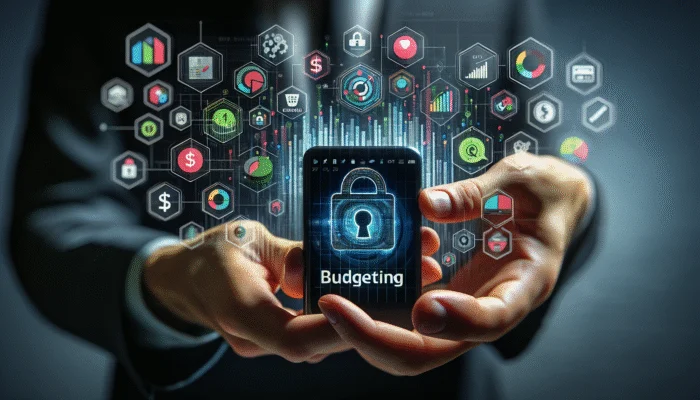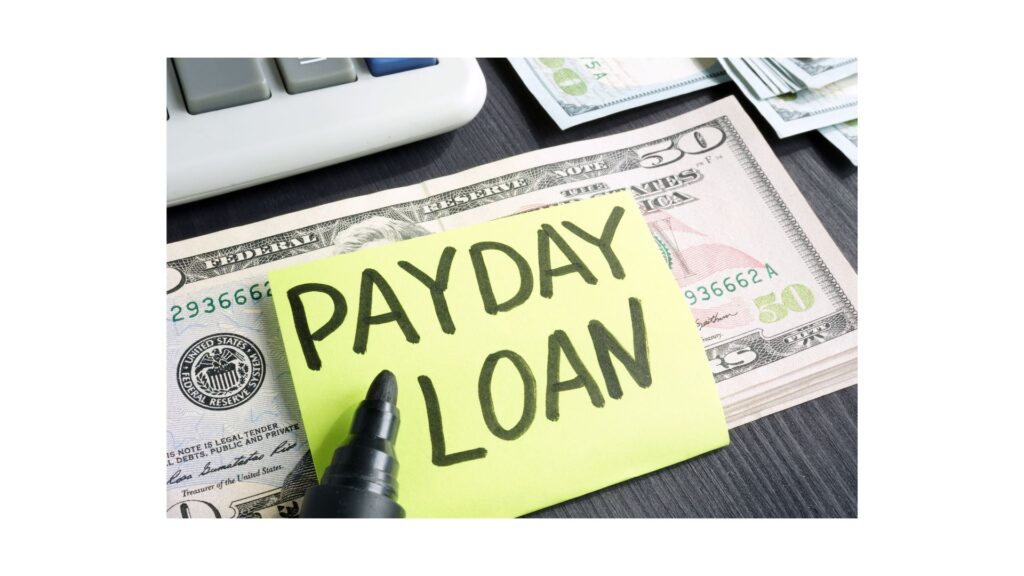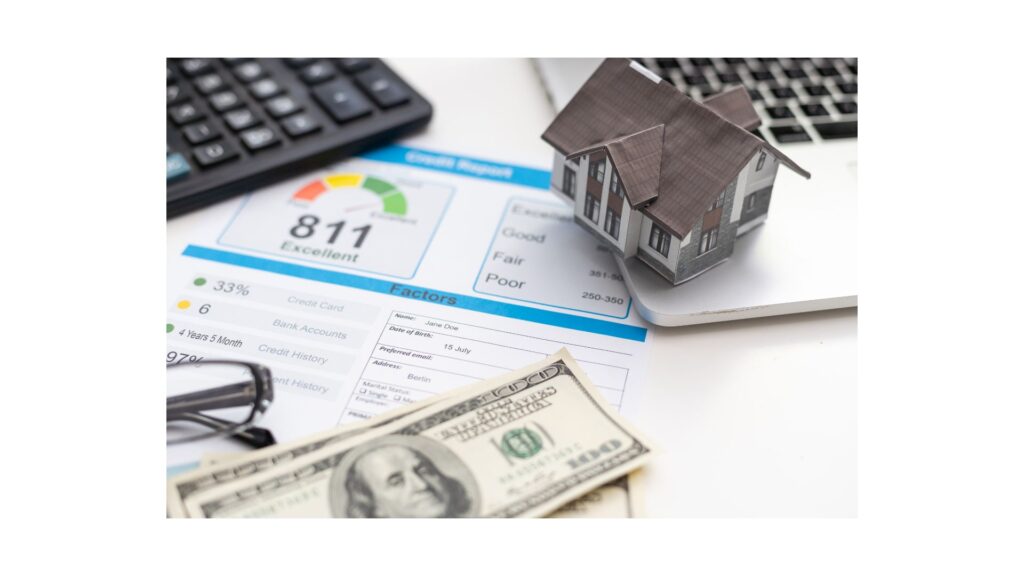At a Glance
- Understanding Budget Apps: Budget apps are digital tools designed to enhance financial management by tracking expenses and setting budgets.
- Popular Options: Top budget apps in the US include Mint, YNAB, and EveryDollar, each catering to different user needs.
- Choosing Wisely: Selecting the right budget app depends on individual financial goals and the specific features that best meet those needs.
- Breaking Cycles: Budget apps are effective tools for breaking the payday loan cycle by promoting better spending habits and financial awareness.
Introduction to Budget Apps in the US

What Are Budget Apps?
Budget apps are digital tools designed to help users manage their finances effectively. They track spending, set budgets, and offer financial insights that empower individuals to take control of their financial lives. Available on smartphones and computers, these apps have gained popularity due to their ability to simplify the budgeting process and provide real-time access to financial data. Through user-friendly interfaces, budget apps allow consumers to visualize their financial health, enabling better decision-making regarding spending and saving.
By utilizing these tools, users can gain clarity on their financial situation, which is essential for avoiding the pitfalls of debt. Budget apps are particularly valuable for Americans, as they address common financial challenges such as overspending, unexpected expenses, and the allure of high-interest payday loans. The convenience of having a budgeting tool at one’s fingertips means that users can monitor their finances anytime and anywhere, making it easier than ever to stay on track.
Popular Budget Apps in the US
In the United States, several budget apps have gained prominence for their unique features and user-friendly interfaces. Apps like Mint, YNAB (You Need A Budget), and EveryDollar are among the most popular options catering to diverse financial needs. Mint offers comprehensive features, including automatic categorization of expenses, integration with financial institutions, and personalized budgeting advice. YNAB, on the other hand, focuses on proactive budgeting, encouraging users to allocate their income towards specific expenses before they arise. EveryDollar provides a simple approach to budgeting with a user-friendly interface that allows for quick expense tracking.
Choosing the right app depends on individual financial goals and habits. For example, users seeking detailed analysis and insights may prefer Mint, while those who want a straightforward budgeting method may find EveryDollar more appealing. It’s essential to consider each app’s features, such as expense tracking, goal setting, and educational resources, when making a selection. This tailored approach ensures that individuals can utilize the app that best meets their needs, ultimately aiding in sound financial management.
How to Choose the Right Budget App

Selecting a budget app involves careful consideration of various factors, including features, user interface, and integration capabilities with financial institutions. Users should first identify their budgeting needs and preferences, as different apps offer unique functionalities. For instance, some may prioritize real-time tracking of expenses, while others focus on goal-setting features or educational resources that enhance financial literacy.
Security is another critical aspect to consider. Look for apps that employ strong encryption methods and have a solid reputation for protecting user data. Reading user reviews and ratings can provide insight into the app’s reliability and functionality. Additionally, consider whether the app is compatible with your banking institutions, as seamless integration can significantly enhance the user experience. By evaluating these aspects, users can confidently choose an app that aligns with their financial goals and provides the necessary tools to manage their finances effectively.
Benefits of Using Budget Apps
Using budget apps offers numerous benefits that can transform an individual’s financial landscape. Firstly, they help users save money by providing a clear overview of spending habits and identifying areas where costs can be cut. This visibility is crucial for making informed financial decisions. Moreover, budget apps reduce financial stress by organizing expenses and helping users stick to their budgets, creating a sense of control over their financial situation.
Achieving financial goals becomes more accessible with the insights provided by these apps. Users can set savings targets, track progress, and adjust their spending behavior accordingly. Additionally, the real-time tracking capabilities of budget apps enable users to make swift changes to their financial plans when unexpected expenses arise. This adaptability is vital in avoiding reliance on payday loans, as individuals can proactively adjust their budgets to accommodate unforeseen costs. Overall, budget apps empower users to take charge of their financial health, leading to long-term benefits and improved financial stability.
Budget Apps and Financial Education
Many budget apps serve not only as financial management tools but also as platforms for enhancing financial literacy. They often include educational resources that help users learn about budgeting, saving, investing, and debt management. For example, apps may feature articles, tutorials, or in-app tools designed to teach users about sound financial practices. This educational component is crucial, especially in a country where many individuals lack comprehensive financial education.
By engaging with these resources, users can gain valuable insights into managing their finances more effectively. Learning about concepts such as the importance of an emergency fund, the impact of interest rates, and strategies for paying off debt can empower individuals to make better financial choices. Moreover, this newfound knowledge can motivate users to take consistent action toward their financial goals, ultimately breaking the cycle of payday loans and fostering a healthier financial future.
How Budget Apps Can Break the Payday Loan Cycle?

What Is a Payday Loan Cycle?
A payday loan cycle occurs when individuals rely on short-term, high-interest loans to cover expenses until their next paycheck. This often leads to a vicious cycle of borrowing, as many borrowers find it challenging to repay the original loan on time, resulting in the need to take out new loans to cover the old ones. The fees associated with payday loans can accumulate quickly, leading to an ever-deepening financial crisis for those caught in this cycle.
Many Americans, particularly those living paycheck to paycheck, fall into this trap due to unexpected expenses or insufficient funds to cover living costs. This reliance on payday loans can create significant financial stress and long-term consequences, including damage to credit scores and increased levels of debt. Breaking free from this cycle is vital for achieving financial stability, and budget apps can play a crucial role in facilitating this transition.
How Do Budget Apps Help?
Budget apps provide invaluable visibility into spending patterns, which is essential for achieving better financial management. By tracking expenses and categorizing spending, users can pinpoint areas where they can save money and adjust their budgets accordingly. This awareness helps individuals avoid the need for payday loans by enabling them to plan for upcoming expenses and manage their cash flow effectively.
Regular use of budget apps fosters improved financial habits, as users become more conscious of their spending behaviors. By setting budgets and monitoring expenses in real time, individuals can identify potential financial pitfalls before they arise. This proactive approach to budget management significantly reduces the likelihood of falling into the payday loan trap. Ultimately, the consistent use of budget apps leads to greater financial stability and empowerment, encouraging users to take control of their financial futures.
Real-Life Success Stories
Many Americans have successfully utilized budget apps to break free from the payday loan cycle, illustrating the transformative power of these tools. For example, a single mother in Texas named Sarah used the app Mint to track her expenses after struggling to make ends meet. By categorizing her spending and setting up alerts for bill payments, she discovered she was spending excessively on dining out and entertainment. With this newfound awareness, Sarah adjusted her budget and redirected those funds to an emergency savings account.
Another success story comes from a recent college graduate, Mike, who found himself relying on payday loans to manage student loan payments. After downloading YNAB, he learned how to allocate his income effectively, prioritizing essential expenses and savings. Over time, Mike built up a small emergency fund that allowed him to cover unexpected costs without resorting to high-interest loans. These stories highlight not only the effectiveness of budget apps but also the importance of consistent tracking and gradual improvement in financial health.
- Expense categorization enabled users to identify spending habits.
- Setting savings goals facilitated the creation of an emergency fund.
- Alerts for upcoming bills helped avoid late fees and additional costs.
- Regular reviews of financial data fostered accountability.
Features of Budget Apps That Help Break the Cycle
Several key features of budget apps can significantly aid users in breaking the payday loan cycle. First and foremost, expense categorization allows users to see exactly where their money is going. By understanding spending habits, individuals can make informed decisions about where to cut back. Furthermore, the ability to set savings goals incentivizes users to prioritize saving over unnecessary spending, ultimately reducing the likelihood of needing a payday loan.
Alerts for upcoming bills and expenses help users avoid late fees and the temptation to borrow money to cover immediate costs. This feature promotes proactive financial management, encouraging users to adjust their budgets in anticipation of future obligations. Additionally, many budget apps offer visual representations of financial health, such as graphs and charts, which can motivate users to stay on track with their budgets. By utilizing these features, individuals can cultivate better financial habits and work towards breaking the cycle of payday loans.
Tips for Using Budget Apps to Avoid Payday Loans
To effectively utilize budget apps in order to avoid payday loans, users can implement several practical strategies. First, setting realistic budgets is crucial. Individuals should take a comprehensive view of their income and expenses, ensuring that their budgets reflect their actual financial situation. This approach helps prevent overextending oneself financially, reducing the likelihood of needing short-term loans.
Regularly reviewing spending is another vital aspect of successful budgeting. By consistently monitoring expenses, users can identify trends and make necessary adjustments to their budgets. Additionally, utilizing app reminders can be incredibly beneficial for saving for upcoming expenses. These reminders help users stay accountable and ensure they are preparing for potential financial challenges. By following these tips, individuals can empower themselves to take control of their finances and break free from the payday loan cycle.
Expert Insights on Using Budget Apps to Avoid Payday Loan Cycles
Include Real-World Examples of Budget App Success
Real-world examples provide compelling evidence of the effectiveness of budget apps in breaking payday loan cycles. One notable example is a family in Ohio who faced mounting bills and unexpected expenses. They turned to the app EveryDollar to track their finances more closely. By creating a zero-sum budget, they allocated every dollar of their income towards specific expenses, including savings. Over six months, they built a solid emergency fund and avoided taking out any payday loans.
Another case involves a recent retiree from Florida who had relied on payday loans to cover medical expenses. After adopting YNAB, she learned to prioritize her spending and allocate funds for health-related costs. Her commitment to budgeting led to significant savings, and she no longer needed to resort to high-interest loans. These examples emphasize the importance of consistent tracking, goal setting, and the gradual improvement of financial health.
- Expense categorization helped identify areas for cutting costs.
- Setting specific savings goals provided motivation to save.
- Regular reviews of financial data fostered accountability.
- Utilizing app alerts ensured timely payments, avoiding penalties.
Provide Actionable Steps for Implementing Budget Apps
To effectively use budget apps, users should follow specific, actionable steps that facilitate financial management. First, setting up the app involves entering personal financial information, including income, expenses, and financial goals. This foundational setup is crucial for establishing a clear budget.
Next, users should categorize their expenses thoughtfully. This categorization aids in understanding spending habits and enables users to adjust their budgets accordingly. Regularly reviewing financial data is essential; users should set aside time each week or month to analyze their expenses and adjust their budgets as needed.
Consistency is key for breaking the payday loan cycle; users must commit to using the app regularly. By maintaining this discipline, individuals can track their progress and make informed decisions about their finances. Following these steps ensures that users can maximize the benefits of budget apps.
- Set up the app by entering income and expense details.
- Categorize expenses to understand spending habits.
- Regularly review financial data to identify trends.
- Commit to consistent app usage for optimal results.
Offer Expert Analysis on Budget App Effectiveness
Experts often analyze the effectiveness of budget apps in helping users avoid payday loans, focusing on factors such as user engagement, app features, and long-term financial impacts. Research indicates that individuals who consistently use budget apps experience improved financial management and are less likely to rely on payday loans. The effectiveness of these apps often correlates with user engagement; those who actively use the app tend to see more positive financial outcomes.
Key features like expense tracking, goal-setting, and alerts significantly contribute to the success of budget apps. Engaging users through personalized features and interactive elements fosters ongoing usage, which is essential for creating long-lasting financial habits. Additionally, experts emphasize the importance of user education, as individuals who understand personal finance concepts are better equipped to utilize budget apps effectively. These insights guide users in choosing the right app and maximizing its benefits, ultimately aiding in breaking the payday loan cycle.
Key Features of Effective Budget Apps
Budget Tracking and Alerts
Effective budget apps provide robust budget tracking features, enabling users to monitor their expenses in real time. This tracking capability is crucial for staying within budget limits and preventing overspending. Users can set spending thresholds for various categories, receiving alerts when they approach or exceed these limits. This proactive feature encourages users to adjust their spending behaviors before it becomes a financial burden.
Additionally, the ability to categorize expenses automatically allows users to gain a clearer picture of their spending habits. With detailed insights into which areas of their budget are most impacted, users can make informed decisions about where to cut back or allocate additional funds. The combination of real-time tracking and alerts fosters a sense of accountability, motivating users to adhere to their budgets and avoid the need for payday loans. Ultimately, these tools empower individuals to take control of their finances and make prudent financial choices.
- Real-time tracking of expenses for immediate awareness.
- Customizable spending limits to prevent overspending.
- Alerts for reaching budget thresholds, promoting accountability.
- Visual representation of financial health through graphs.
Integration with Financial Institutions
Integration with banks and credit card companies is a pivotal feature of effective budget apps, allowing for automatic transaction updates. This seamless integration ensures that users have access to up-to-date financial information, which is crucial for effective budgeting. By linking their accounts, users can view all financial data in one place, making it easier to track spending and manage budgets.
This feature eliminates the need for manual entry of transactions, saving users time and reducing the likelihood of errors. Furthermore, direct integration allows budget apps to provide real-time insights into users’ financial health, enabling them to make informed decisions quickly. By having a comprehensive overview of their financial situation, individuals can better anticipate upcoming expenses and adjust their budgets accordingly, reducing the reliance on payday loans.
Customization and Goal Setting
Customizable budgets and financial goals are essential features of effective budget apps, enabling users to tailor the app to their specific needs. By setting personalized financial goals, users can stay motivated and focused on their objectives, whether saving for a vacation, a down payment on a house, or building an emergency fund. This sense of purpose is crucial for maintaining discipline in budgeting and avoiding the pitfalls of payday loans.
Moreover, customizable budgets allow users to allocate their income according to their unique financial situations. Whether prioritizing savings or managing debt, the flexibility to adjust budgets ensures that users can adapt to changing financial circumstances. This adaptability is vital for long-term success in breaking the payday loan cycle, as individuals learn to prioritize their financial well-being and make informed decisions about their spending habits.
How to Use Budget Apps to Manage Expenses?
Setting Up Your Budget App
Setting up a budget app is the first step toward effective financial management. Users should begin by entering their personal and financial information, including income sources, fixed expenses, and variable costs. This foundational data is crucial for establishing a clear understanding of one’s financial situation. The initial setup also often includes categorizing expenses into specific groups such as housing, food, transportation, and entertainment, which helps in tracking spending patterns effectively.
Once the app is set up, users can establish budget limits for each category based on their financial goals and needs. This step is essential for ensuring that spending stays within manageable limits. Proper setup provides a solid foundation for ongoing financial management and is particularly important for avoiding the temptation of payday loans. By having a clear picture of their finances from the outset, users can confidently navigate their financial landscape.
Tracking Daily Expenses
Consistently tracking daily expenses is essential for understanding spending patterns and making informed financial decisions. Budget apps simplify this process by automatically categorizing transactions, allowing users to see where their money is going without the burden of manual entry. This ease of use encourages individuals to engage regularly with their budgeting practices, fostering a habit of financial mindfulness.
Identifying areas for potential savings becomes straightforward when users can track their spending over time. For instance, if a user discovers they are spending excessively on dining out, they can choose to cut back in that area and redirect those funds toward savings or debt repayment. This regular tracking not only aids in maintaining budgets but also helps individuals avoid falling into the payday loan trap by ensuring they are always aware of their financial status.
What Are the Benefits of Regular Expense Tracking?
Regular expense tracking provides significant benefits that contribute to long-term financial stability. By consistently monitoring spending habits, users can gain insights into their financial behaviors, allowing them to make informed decisions. This awareness helps prevent overspending, which is often a precursor to the need for payday loans.
Furthermore, tracking expenses can uncover opportunities for savings that might otherwise go unnoticed. For example, users may identify subscriptions or services they no longer use and can eliminate these costs to free up funds. Over time, this practice can lead to improved cash flow, enabling users to build emergency funds and reduce reliance on high-interest loans. Ultimately, the benefits of regular expense tracking are clear: it cultivates better financial habits and empowers individuals to take control of their financial futures.
Analyzing Budget Reports and Adjusting Plans
Analyzing budget reports is a critical aspect of effective financial management. Budget apps typically generate reports that provide insights into spending patterns, savings progress, and overall financial health. By regularly reviewing these reports, users can identify trends, assess their financial situations, and make necessary adjustments to their budgets as needed.
Adjusting budget plans based on insights gained from these analyses optimizes savings and further reduces reliance on payday loans. For instance, if a user consistently overspends in a specific category, they can reallocate funds to better align with their actual spending habits. This adaptability is essential for maintaining financial health and achieving long-term goals. By prioritizing regular analysis of budget reports, users can stay informed and make proactive changes that lead to greater financial stability.
Strategies for Avoiding Payday Loans with Budget Apps
Creating an Emergency Fund
Creating an emergency fund is a fundamental strategy for avoiding payday loans. Budget apps can facilitate this process by allowing users to set aside money specifically for unexpected expenses. By saving a small amount regularly, users can gradually build a safety net that provides financial security when emergencies arise. This strategy is critical for breaking the cycle of relying on high-interest loans to cover unexpected costs.
To effectively create an emergency fund, users should designate a specific savings goal within their budget app. This goal serves as a target to work towards, motivating users to allocate funds consistently. Additionally, budget apps often provide visual progress indicators, which can further encourage savings. By prioritizing the establishment of an emergency fund, individuals can significantly reduce their dependence on payday loans, fostering greater financial stability and peace of mind.
Reducing Unnecessary Spending
Reducing unnecessary spending is a powerful strategy for avoiding payday loans, and budget apps excel at helping users identify areas where they can cut costs. By analyzing expense categories, users can pinpoint discretionary spending that may not align with their financial goals. For example, a user may discover that they are spending significantly on entertainment or dining out, which can be adjusted to free up funds.
Implementing changes based on these insights can lead to substantial savings over time. Budget apps often allow users to set spending limits for various categories, reinforcing responsible spending habits. Furthermore, developing a mindset focused on value rather than consumption can help individuals prioritize essential expenses and savings, ultimately leading to decreased reliance on payday loans. By actively working to reduce unnecessary spending, users can take significant steps toward financial freedom.
What Are the Best Practices for Using Budget Apps?
Best practices for using budget apps include regular monitoring, setting realistic budgets, and adjusting plans as needed. Users should commit to checking their budgets frequently to stay engaged with their financial situations. This engagement allows for timely adjustments and the ability to respond quickly to any changes in income or expenses.
Setting realistic budgets is crucial for long-term success. Individuals should take an honest assessment of their financial situations, ensuring budgets reflect their actual spending capacities. Additionally, it’s essential to take advantage of app features like alerts and reports, which can provide valuable insights and reminders about upcoming expenses. Following these best practices can effectively help avoid payday loans and foster a culture of financial responsibility.
Research-Backed Benefits of Using Budget Apps to Avoid Payday Loan Cycles
Studies on Budget App Effectiveness
Research has consistently shown that budget apps can significantly improve financial management among users. Various studies highlight the reduction in reliance on payday loans and the increase in savings attributed to the use of these applications. By providing users with tools to track expenses, set budgets, and gain insights into financial habits, budget apps empower individuals to make informed financial decisions.
The effectiveness of budget apps is particularly evident in their ability to foster a sense of accountability among users. Individuals who actively engage with their budgeting tools tend to develop healthier financial behaviors and are less likely to fall into debt cycles. Moreover, studies indicate that regular use of budget apps correlates with improved financial literacy, which can lead to more sustainable financial practices over time. These findings support the notion that budget apps are valuable tools for breaking payday loan cycles.
Long-Term Financial Impact
Using budget apps over the long term can lead to improved credit scores and financial stability. By empowering users to avoid payday loans and manage their finances proactively, budget apps contribute significantly to healthier financial futures. Individuals who consistently track their spending and adhere to budgets are more likely to cultivate good credit habits, which positively impacts their credit scores.
Additionally, the ability to budget effectively allows users to build savings and invest in their futures. Over time, the cumulative effect of these practices can lead to increased financial security and the ability to pursue long-term goals, such as homeownership or retirement savings. The long-term impact of using budget apps is a key benefit for users dedicated to achieving financial health and breaking free from the payday loan cycle.
Expert Recommendations on Budget App Use
Financial experts widely recommend budget apps as effective tools for breaking the payday loan cycle. They emphasize the importance of regular use and the establishment of clear financial goals. Experts suggest that users take the time to set up their apps thoughtfully, categorizing expenses, and creating personalized budgets that reflect their individual financial situations.
Moreover, financial professionals highlight the significance of utilizing the educational resources offered by budget apps. By engaging with these materials, users can enhance their financial literacy and develop better money management skills. Experts encourage users to remain committed to their budgeting practices, as consistent engagement is crucial for fostering lasting financial habits and avoiding the pitfalls of payday loans. By following expert recommendations, individuals can maximize the benefits of budget apps and work towards achieving long-term financial success.
Conclusion: The Future of Budget Apps in the US
Technological Advancements in Budget Apps
Budget apps continue to evolve with new features and technologies that enhance the user experience. Future advancements may include AI-driven financial advice tailored to individual users’ spending habits and goals. As technology progresses, budget apps are likely to become even more intuitive, offering personalized insights and recommendations that can guide users toward better financial decisions.
Enhanced security measures will also be a focus for future developments, ensuring that user data remains protected in an increasingly digital world. These advancements will further empower users to manage their finances effectively and break free from payday loan cycles. As budget apps become more sophisticated, their potential to improve financial literacy and foster responsible spending will only grow, making them invaluable tools for Americans seeking financial stability.
The Role of Budget Apps in Financial Education
Budget apps play a crucial role in financial education by providing users with tools to understand and manage their finances. Through integrated educational resources, users can learn about fundamental financial concepts that help break the cycle of payday loans. By promoting financial literacy, budget apps empower individuals to make informed choices about their spending and saving habits, fostering a culture of financial responsibility.
As users engage with these educational materials, they become better equipped to navigate their financial challenges. This role is vital for long-term financial well-being, as individuals who understand budgeting, saving, and debt management are more likely to avoid reliance on payday loans. Ultimately, budget apps serve as both practical financial tools and educational platforms, contributing significantly to the overall financial health of Americans.
How Can Budget Apps Continue to Help Americans?
Budget apps can continue to help Americans by adapting to changing financial needs and offering personalized solutions. By incorporating user feedback and staying attuned to economic trends, developers can ensure that these applications remain relevant and effective. Furthermore, budget apps can integrate with other financial services, providing users with a comprehensive approach to managing money.
By continuously evolving and enhancing their features, budget apps can provide ongoing support for individuals seeking to improve their financial situations. This ongoing assistance is essential for avoiding payday loans and fostering long-term financial stability. As budget apps become increasingly sophisticated, their potential to empower users with the tools and knowledge necessary for financial success will only continue to grow.
FAQs
What are budget apps?
Budget apps are digital tools that help users manage their finances by tracking spending, setting budgets, and offering financial insights. They can be accessed via smartphones or computers and provide real-time data on financial health.
How can budget apps help avoid payday loans?
Budget apps help avoid payday loans by providing visibility into spending habits, enabling users to set budgets, track expenses, and create savings plans. This proactive management reduces the need for high-interest loans.
What are some popular budget apps in the US?
Popular budget apps in the US include Mint, YNAB (You Need A Budget), and EveryDollar. Each offers unique features tailored to different financial management needs.
How do I choose the right budget app?
Choose a budget app by considering features, user interface, integration with financial institutions, and security measures. Reading user reviews can also help assess reliability and ease of use.
What features should I look for in a budget app?
Look for features such as real-time expense tracking, budget alerts, expense categorization, and goal-setting capabilities. These functions enhance financial management and help avoid payday loans.
Can budget apps improve financial literacy?
Yes, many budget apps offer educational resources that enhance financial literacy. Users can learn about budgeting, saving, and debt management through in-app tools and articles.
How can I set an emergency fund using a budget app?
To set an emergency fund, designate a specific savings goal within your budget app. Allocate a small, consistent amount toward this goal to build your fund over time.
What are some best practices for using budget apps?
Best practices include regular monitoring of expenses, setting realistic budgets, and adjusting plans as needed. Utilizing app features like alerts and reports can also enhance effectiveness.
How do I analyze budget reports?
Analyze budget reports by reviewing spending patterns, savings progress, and overall financial health. Use these insights to make adjustments to your budget and spending habits.
Are budget apps effective for long-term financial management?
Yes, studies show that budget apps can significantly improve long-term financial management, reduce reliance on payday loans, and increase savings by promoting responsible financial habits.

A Mississippi-based financial consultant with over a decade of experience in personal finance and payday lending. Originally from Jackson, he holds certifications in financial planning and credit advisory. Passionate about helping everyday Americans make smarter borrowing decisions, he focuses on guiding people away from common debt traps while promoting healthy financial habits. His expertise bridges the gap between short-term loan needs and long-term money management strategies. Outside of work, he volunteers with local programs that promote financial literacy across Mississippi.





Your exploration of budget apps highlights a crucial tool in the contemporary digital landscape, especially as financial literacy becomes increasingly essential for navigating economic challenges. It’s interesting to note how the proliferation of these apps coincides with rising consumer debt, prompting a reevaluation of our spending habits and financial planning.
You bring up a really important point about the intersection of budget apps and rising consumer debt. It’s fascinating to see how these tools have become both a response to and a part of the conversation around our financial habits. In many ways, they empower users to take control of their finances in a way that was harder to achieve just a decade ago.